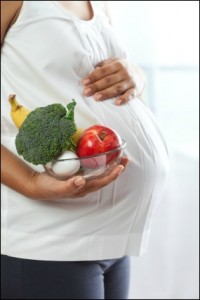
The patients had undergone workups and appointments with hematology experts. Most of them did not have sickle cell disease or other exotic red blood cell problems. What they had was the usual, run-of-the-mill iron deficiency—the kind most pregnant women exhibit in a mild form. But their iron deficiency was so profound, and of such long standing, that it had deeply affected their ability to make red blood cells for a long time, and put them at a dangerous place at the end of their pregnancies.
“My goodness,” I sputtered on the labor floor. “What’s going on here?”
One of the clinicians I worked with said: “Oh, it’s nutrition. Poor nutrition.”
“How do you know that?” I asked. “Why would it be worse here than anywhere else? What’s really going on?”
“It’s just like that here,” she said.
When you’re a scientist, those are fighting words. And I’ve been trying to understand ever since.
I wanted to make sense of that, of why “it’s just like that here.” One of the newest tools I wanted to use is something called geocoding, which generally means mapping location data from other data (such as street addresses). There’s a developing bank of literature in this field, and new terms have arisen, such as “food deserts” to refer to areas that may be highly populated (and have lots of caloric resources), but that have a relative dearth of produce and other healthy food. However, not a lot of research exists linking these geographic techniques to actual clinical outcomes—such as patient blood counts. Those are the pieces of the puzzle that my colleagues and I wanted to put together.*
Working as a team, my vice chair in the department of obstetrics & gynecology and women’s health, Dr. Cynthia Chazotte, a talented Einstein researcher (and Lehman College MPH student), Danielle Bottalico, and I came up with a strategy to describe the neighborhoods of the Bronx and their available healthy food sources (HFS). Creating this map was harder than you’d think; it was much harder than we initially thought, and there was little guidance in the current scientific literature.
Ultimately, Danielle invented a way to verify those sources. We ended up using market research databases, census data, Google Maps and old-fashioned phone calls. She then constructed some beautiful maps of the Bronx, delineating both “as the crow flies” distance and “network” distance, which represents how long a trip it would be for someone to walk to healthy food.
Once we had our maps, we constructed a cohort of women: the full panel of women who established prenatal care at Montefiore Medical Center in a single year. We used multiple techniques from many of our Montefiore electronic medical record systems to create a database of all these patients and their clinical and demographic features.
Finally, we handed off our gigantic database to Dr. Glen Johnson of Lehman College and the CUNY School of Public Health , a statistician who made sense of all our numbers and maps.
Was there any connection between how far these women lived from HFS and their anemia?
Ultimately, the answer is “I think so.” Our results showed no increased risk of anemia for our overall cohort when stratified by their walkable distance from HFS. However, when stratified by insurance source (a decent proxy for socioeconomic status), women with public or no insurance did have a statistically significantly increased risk for anemia if they lived more than a quarter of a mile from a healthy food source. When adjusted for all other co-variables, this relationship became less statistically significant, but still likely true.
What do these findings suggest? Like every researcher working on a question, I think we need more research. But roughly speaking, our results show that distance counts, though that distance is surmountable with money. If you have enough resources, then being walking distance from a store may or may not change your dinner menu. But if you don’t—well, then it might. And those factors could eventually put you at higher risk of anemia.
Our findings were presented this week as a poster at the annual meeting of the American Congress of Obstetricians and Gynecologists.
There are clearly many limitations to our study. We’ll work on those, and I dream of one day creating a more perfect model, which will include public transportation schedules, and access to cars, and weather, and any number of other variables that will help us understand this larger, more complicated world.
But I’m proud of the work we had to do to make sense of what we were seeing on a clinical level. To understand what our patients were coming to us with, we had to invent some methodology and some mapmaking. We did this because we knew that “it’s just like that here” is never a good enough answer. We knew that once we have a better idea of what is going on, that’s when we can really help. Because it may just be like that here right now, but if we understand why, we can figure out how to help make it different here in the future.
*Reference: Bottalico, D., Johnson, G., Chazotte, C., Karkowsky, C. ”Anemia During Pregnancy in Relation to Walkable Distance to Healthy Food Sources in Bronx, New York.” Presented at the 61st Annual Clinical Meeting of the American Congress of Obstetricians and Gynecologists, New Orleans, LA, May 2013.

